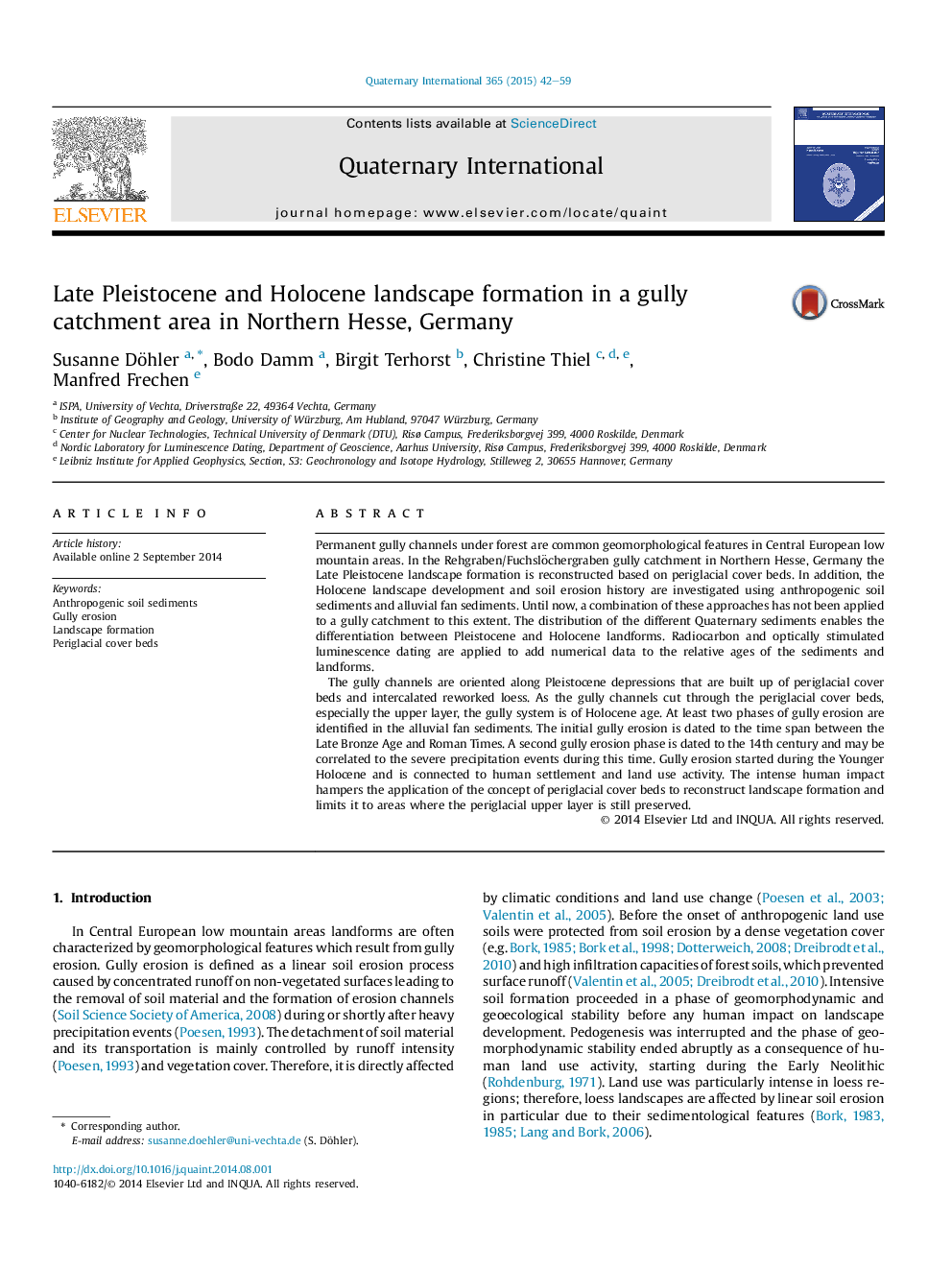| Article ID | Journal | Published Year | Pages | File Type |
|---|---|---|---|---|
| 1040903 | Quaternary International | 2015 | 18 Pages |
Abstract
The gully channels are oriented along Pleistocene depressions that are built up of periglacial cover beds and intercalated reworked loess. As the gully channels cut through the periglacial cover beds, especially the upper layer, the gully system is of Holocene age. At least two phases of gully erosion are identified in the alluvial fan sediments. The initial gully erosion is dated to the time span between the Late Bronze Age and Roman Times. A second gully erosion phase is dated to the 14th century and may be correlated to the severe precipitation events during this time. Gully erosion started during the Younger Holocene and is connected to human settlement and land use activity. The intense human impact hampers the application of the concept of periglacial cover beds to reconstruct landscape formation and limits it to areas where the periglacial upper layer is still preserved.
Keywords
Related Topics
Physical Sciences and Engineering
Earth and Planetary Sciences
Geology
Authors
Susanne Döhler, Bodo Damm, Birgit Terhorst, Christine Thiel, Manfred Frechen,
